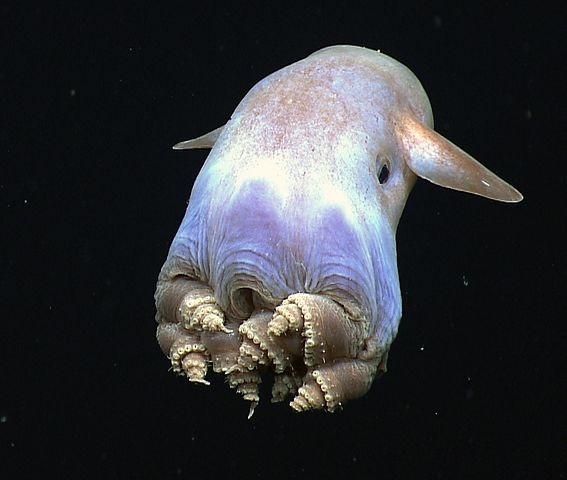Casper, the "ghostly" octopus, was found in the depths. Scientists are gradually uncovering the mysteries of the cephalopod, which was discovered in Hawaii in 2016 and is located more than two miles below the surface.

=
Ghostly Octopus
A white octopus floated motionlessly on the ocean floor while gazing into the camera of a deep-diving robot with its beady eyes.
At a depth of 4,290 meters in the ocean off Hawaii, it was 2016. (2.6 miles). Nobody had seen an octopus like it before, let alone one that was that deep. It was given the moniker Casper because of its eerie look.
Until then, the only cephalopods discovered swimming about at such depths were Dumbo octopuses, named after another cartoon character. They had exquisite, ear-like flaps on either side of their heads and were seen swimming as deep as 6,957 meters.
For Janet Voight, associate curator of invertebrate zoology at the Field Museum of Natural History in Chicago, seeing Casper was a memorable experience. She remembers the finding and remarks, "This is fresh and unusual.
Casper the Friendly Ghost (Octopus)
That initial look of Casper raised a lot of intriguing questions. Why is it that color? The majority of other octopuses have colorful chromatophores in their skin that may instantly alter their appearance and serve as camouflage to frighten away potential predators.
Octopuses may be colorful even in the deep water, like the purple, warty Graneledone. Some appear to conceal luminous, bioluminescent prey they capture in their arms by donning a cloak of black skin pigments, preventing other predators from becoming aware of them. Voight speculates that Casper's lack of color in its diet may cause pallor.
Although Casper is not the only one with short arms, they are still a mystery. According to Voight, your arms will get longer and thinner the shallower and more tropical you are.
There is no apparent reason for the tendency toward shorter limbs in deep-dwelling octopuses. Voight believes that instead of reaching out to grasp food, they evolved a different strategy: turning their bodies so that their mouths were right over it on the bottom.
By reviewing five years' worth of previously recorded video from deep-sea surveys around the Pacific, scientists have discovered new information about Casper. They found hundreds more creatures from two different species sitting on the seafloor like Casper.
They could be pretty prevalent, speculates Voight. "It just shows how little we understand about what's under there,"
Observing Casper
Voight found the Caspers' arms around egg clutches fastened to tall sponges extremely intriguing. She had previously hypothesized that octopuses living on the seafloor require firm rocks to deposit their eggs. The depth they can travel may be constrained by the possibility of fewer exposed rocks farther below.
"By discovering a sponge stalk, Casper demonstrated there are workarounds for it," she claims. Is this a significant development in octopus evolution?"
The sponges are linked to stony nodules that take millions of years to produce and are dispersed throughout vast abyssal plains.
Other Deep-Sea Octopus
If other deep-sea octopuses are any indication, the female Caspers defend their eggs for a considerable time. A different species of octopus (Graneledone boreopacifica) was observed off the coast of California, brooding her single clutch in the exact location for more than four years.
Because all we now know about the drab and enigmatic Casper octopuses come from images rather than actual specimens, they have not yet been given an official name.
Voight explains, "With an octopus, you need it in your hand.
Related Article : Marine Researchers Successfully Cultured Pygmy Zebra Octopus
For more news from the animal kingdom, don't forget to follow Nature World News!
© 2025 NatureWorldNews.com All rights reserved. Do not reproduce without permission.





